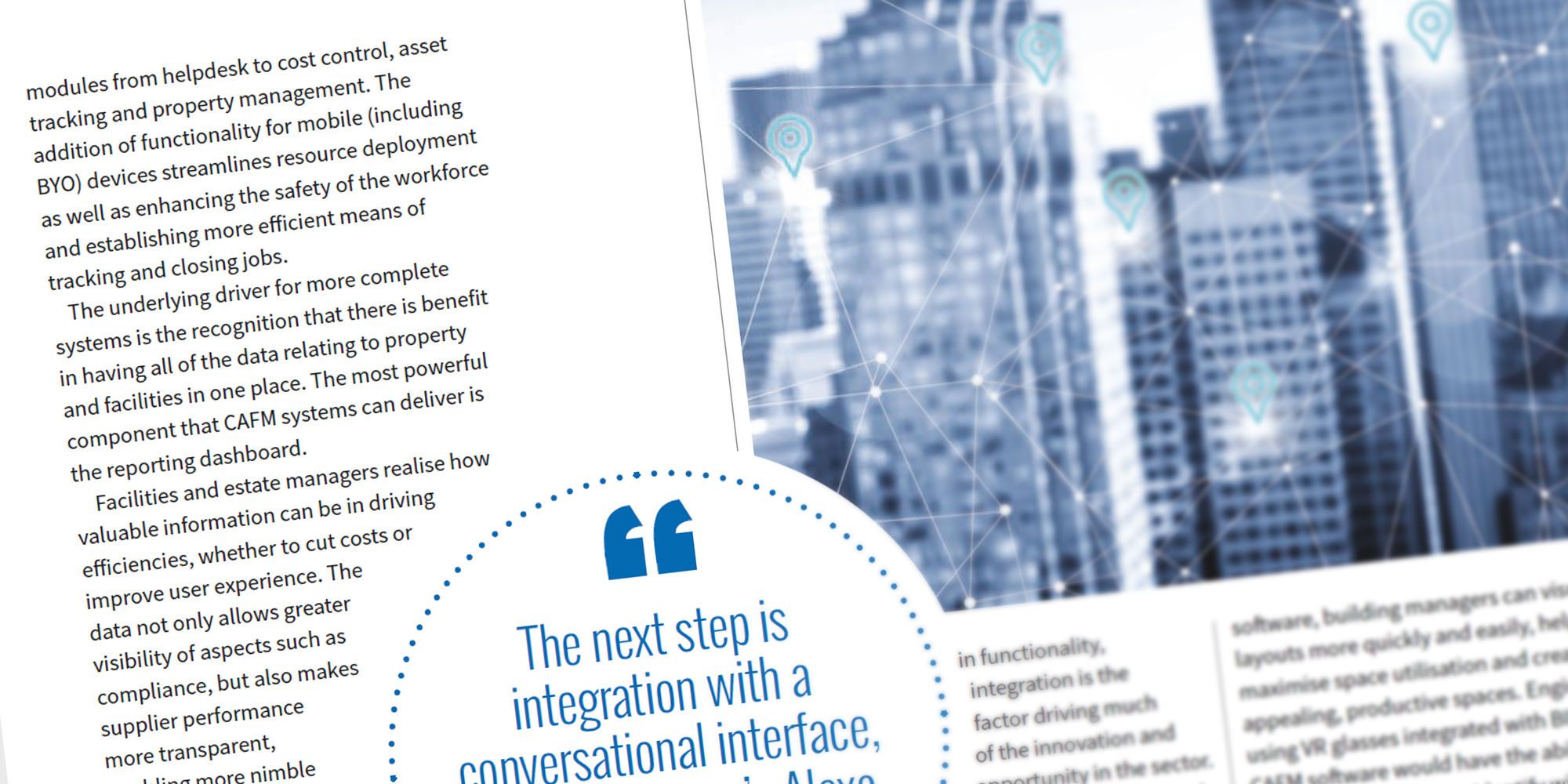CAFM
Kevan Davey, Director, Concerto – Part of Bellrock Group
In many respects CAFM is becoming part of an enterprise-wide solution of connected software solutions that include accounting, EPR solutions and HR platforms.
Increasingly, systems include a range of modules from helpdesk to cost control, asset tracking and property management. The addition of functionality for mobile (including BYO) devices streamlines resource deployment as well as enhancing the safety of the workforce and establishing more efficient means of tracking and closing jobs.
The underlying driver for more complete systems is the recognition that there is benefit in having all of the data relating to property and facilities in one place. The most powerful component that CAFM systems can deliver is the reporting dashboard.
Facilities and estate managers realise how valuable information can be in driving efficiencies, whether to cut costs or improve user experience. The data not only allows greater visibility of aspects such as compliance, but also makes supplier performance more transparent, enabling more nimble adjustments to be made to service provision as organizational requirements change.
There is an ever-present demand to broaden a CAFM system’s functionality, tracking and reporting capabilities. The internet of things opens up more integration possibilities, for example with smart building monitoring systems. Pressure on workspace is driving adoption of alternative workplace strategies such as hot desking.
The net result is that the organization knows more about the performance of its facilities services than ever before, which might change how facilities services are delivered. In a world of ubiquitous data, analysis and insightful management reports, it seems likely the long-running debate about FM service delivery models will swing in favour of the management model.
Suppliers are selected for their competence, geographic location and ability to meet the client’s needs. The transparency provided by CAFM systems means their performance can be measured against cost and performance criteria, and suppliers replaced without disrupting the underlying model. Self-deliverers may find themselves asked to measure and report their own performance – but is this a mechanism for improving standards, or a case of turkeys force to vote for Christmas?








